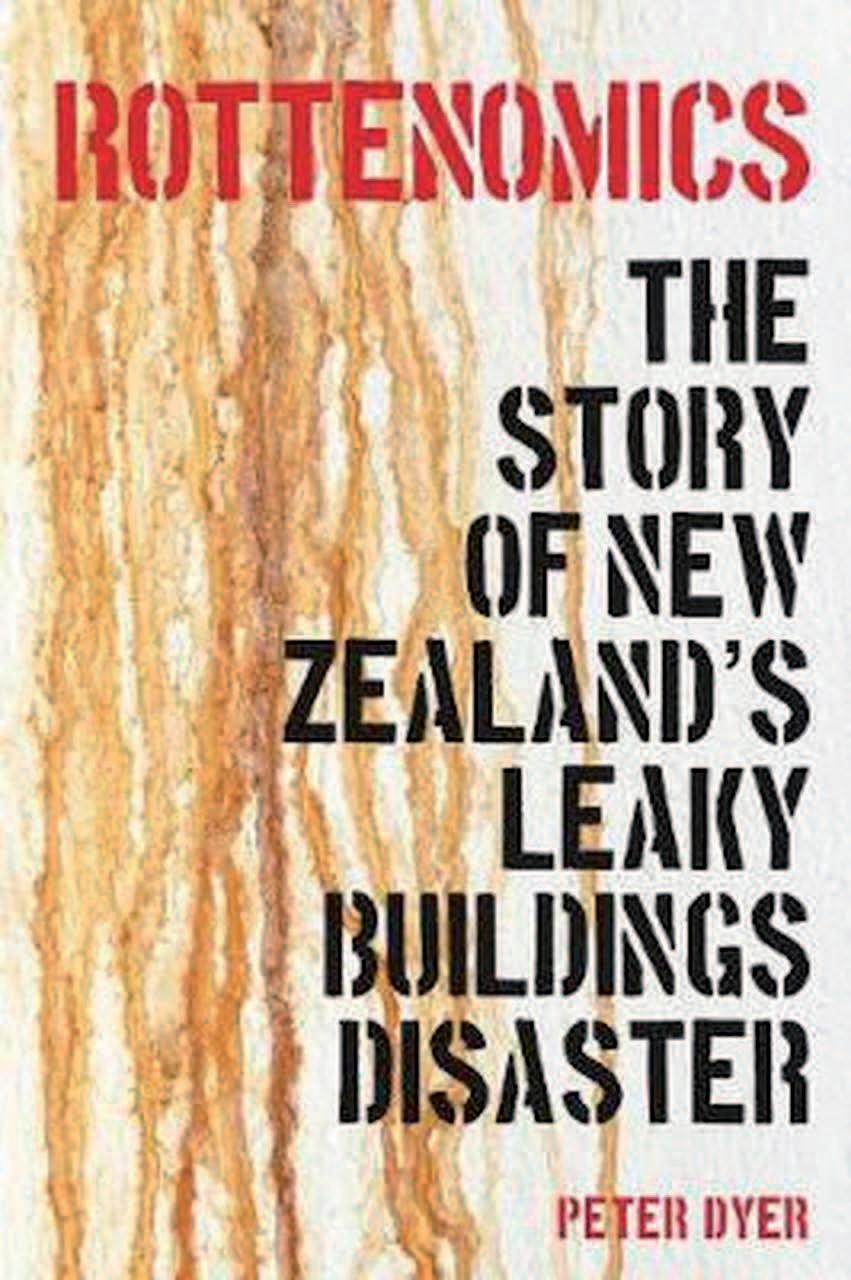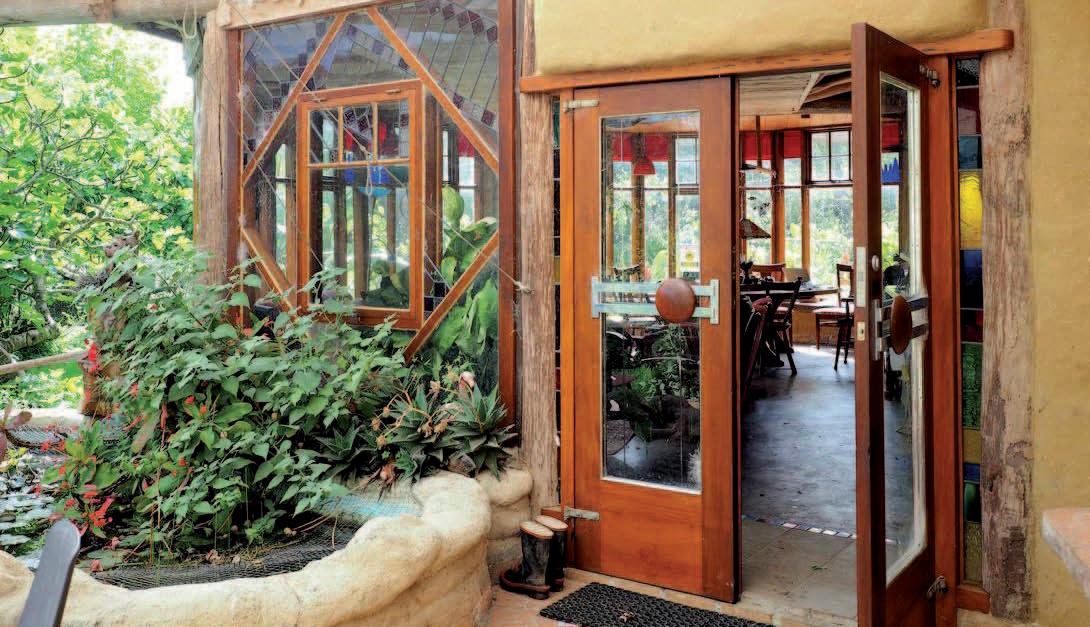
7 minute read
BOOK REVIEW
Rottenomics
The Story of New Zealand’s Leaky Buildings Disaster.
Advertisement
Written by Peter Dyer.
Book review by Graeme North
Peter Dyer is a journalist who spent carried out. Government. A major cause of rotting eight years researching and writing One really tough fast growing candidate – houses was a direct consequence of the this book. Many of the people he pinus radiata – stood out although variously ideological neo-liberal economic system talked to are known well to some of us, and described early on as: that swept NZ from the mid-1980’s when the period he covers involves so many of us in the building industry as we grappled with one of NZ’s greatest disasters. And on top of the rotting issues, there were, and still are, a whole host of underlying structural failures as well. “Anyone in the remedial industry will tell ‘a tree that grows like rhubarb’ (1898), and ‘as absolutely worthless unless treated in some form except for timber where no weather reaches it. It will grow quickly almost anywhere… and it lends itself to the soaking – in of preservatives more than any timber….’ (1913 Submission to the Royal Commission Rogernomics took hold. This book’s title of Rottenomics is an obvious play on this. The Minister of Forestry at the time stated: ‘this Government’s policy is to allow industry to control its own destiny without Government regulation’. As Dyer says ‘It wasn’t broke. But they fixed it.’ you that when they tear the wall off rotting on Forestry). In 1987 the Building Performance Guarantee buildings, they typically find other serious problems: structural deficiencies, fire violations, earthquake vulnerability and so forth”. This has certainly been my There was a fight for many years over which treatment should be adopted for pine between the boric treatment of Australian Scheme was axed. In 1988 the TPA was abolished and replaced with an industryrun Timber Preservation Council. The use of kiln-dried timber without fungicidal own experience with nearly all treatment was promoted from the remedial work I have been within the timber industry. It involved with. As an aside, it was my involvement with one of “Anyone in the remedial industry rotted if wet. Monolithic cladding became fashionable with sealants the very early leaking buildings, will tell you that when they tear replacing flashings, which leaked. along with Greg O’Sullivan from Prendos, where I suggested recladding using a draining cavity to protect the building, let it dry out, and keep it dry. I have never the wall off rotting buildings, they typically find other serious problems: structural deficiencies, fire violations, earthquake vulnerability and so forth”. The timer for the bomb to go off was ticking. The Ministry of Works (MOW) gave real-world practical advice to the Government as opposed to claimed being the first to think the neo-liberal faith-based advice of cavities behind cladding other coming from Treasury, so it had than brick veneer as a weathering to go. Destruction of the MOW in solution before. I believe I was, but I researchers and the British Tanalith 1988 was opposed by virtually no politician graciously let Greg take the glory as cavities promoters. Eventually this was resolved, of any stripe when it came before Parliament. were not widely welcomed when they first and the use of treated timber was rigorously Lost immediately was its enormous became common. over-seen by the Timber Preservation institutional knowledge along with a The causes of weather-tightness issues in Authority (TPA). NZ houses may have had very well-trained work force that could NZ are complex and interlinked. Some go their faults but by and large they did not effectively design and build schools, houses, back to our geographical position where we rot. The result of the TPA’s oversight was that bridges, power stations and hydro-dams. are exposed to the wind driven rain off the there was little concern about timber rotting Of course, there were continued overleaf... surrounding oceans. Some go back to the in NZ’s houses. instances of inefficiencies, as I experienced 19th century, when trials of trees to replace Then there was an ideological shift in myself, but training of its staff and a lot of the rapidly depleted native timbers were
Research and Development was carefully and thoroughly carried out. The MOW even had a group dedicated to the writing of building and materials standards, something hard to imagine given EBANZ’s recent trials with SNZ. As I clearly recall, building control systems were uneven, annoying, and cumbersome, but there was not much wrong with the buildings. Then we were given performance-based building controls with the 1991 Building Act. The Building Industry Authority (BIA) administered it but was toothless and
earth studio
We specialise in building true rammed earth homes with clay, not cement. - Rammed earth walls - Rammed earth floors - Japanese limestone floors - Tadelakt Moroccan waterproof plaster 027 753 6764 stefan@earthstudio.co.nz
www.earthstudio.co.nz


underfunded. There was no research around this Act’s performance-based approach. Even in 2017, even after the 2004 Building Act, that was still the case. ‘Despite nearly universal claim for performance-based regulation, the reasons supporting its use remain largely theoretical and conjectural.’ In other words, it was faith based. In 1992 Parliament passed the repeal of Clerk of Works Act. Invaluable Clerks of Works became a dying breed. The 1993 Companies Act allowed many companies to come and go, and that allowed many fly-by-nighters to flee responsibility for shoddy work by folding the company and/or relocating overseas. Training was gutted when a p p r e n t i c e s h i p contracts were replaced with e m p l o y m e n t contracts, and organised labour was attacked. Private building certifiers were set up to fail, and fail they did when insurance cover was unobtainable as the leaky building fiasco started to

bite. And on and on went the perfect storm – one that Dyer reveals is estimated to doom 174,000 homes to rot, and to cost us collectively over $47 billion. These figures ignore commercial and public buildings and were only found out after the Ombudsman insisted that suppressed reports on the extent of the problem were released by MBIE. This book provides great insight and revelations about the crazy times those of us in the building industry have been grappling with ever since the start of the neo-liberal experiment in the 1980s, and the long aftermath which is still very much with us, along with its conjoined growing inequality and run-away environmental damage. This book could have done with a good technical edit, but the message is clear enough, and should be read by everyone involved with building or building controls. This is especially so if you have lived through a lot of this period and/or wondered how it ever could have happened. One big technical take away message to remember: ‘All claddings leak’. Postscript. The great challenge we face is working out how we can help architecture change radically and quickly to cope with a new society that is being thrust upon us by a bug out of a bat, an architecture that is able to support people through collaborative local self-reliance, while also dealing decisively with climate change, environmental degradation, and inequality - all the stuff we were eagerly exploring and putting into action in the 70’s, work that was largely and very sadly swept aside by a dog-eat-dog approach.
ON THE MARKET : WARKWORTH
If you are interested in this internationally recognised eco-house on the Te Araroa Trail near Warkworth, please get in touch.
The last issue of Earthbuilding had an article about the house that Graeme North designed, built, and lives in with his wife Deniece, on nearly two acres of flat productive land near Warkworth. You may recall it is partly a renovated early 1900’s 4-bedroom villa, now with earth plastered walls, with an additional newly built open-plan living area that is really a work of art for living in, hand crafted from natural materials, with its adjoining bedroom and ensuite. Then there is the large barn, and various out buildings. The property has proven itself as an absolute haven of comfort, abundance and robustness. However time has revealed that we may not be in the right place for family connections to be readily maintained during times of difficulty. So we are thinking about offering this unique property for sale.











